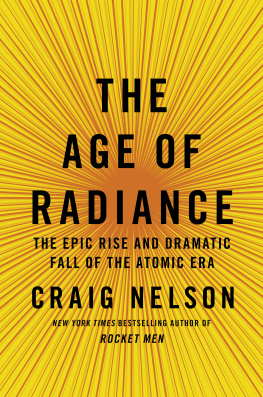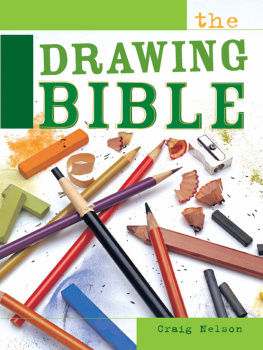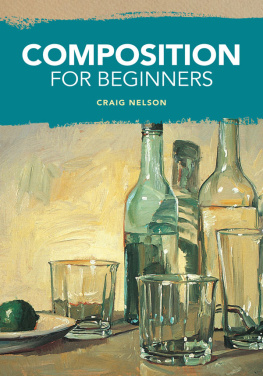Drawing is the one artistic endeavor that everyone has experienced at some time. It was most likely the first written form of communication, and continues to be a favorite leisure activity. It is the seemingly magical act of drawing that captivates the heart and imagination of so many. The thrill of making a group of marks create an image offers a special sense of accomplishment. As a child matures, each new year brings a greater awareness of how to make those marks accurately reflect the subject he or she chooses to depict. The act of drawing is timeless.
Although mediums, techniques and concepts have changed, the use of marks and tones has always been the foundation on which drawings are made. Beginning with a blank page and ending with a pleasing image can be a rewarding experience. As in any endeavor, improvement comes with practice and repetition. Eye-hand coordination and sensitivity to mediums may be developed through experience. Today, those who engage in the art form known as drawing work on a variety of levels. There are those who doodle, those who sketch for fun, those who draw for a living, and those who draw for the sheer aesthetic beauty of drawing.
Whatever the motive, drawing is something that everyone can enjoy and grow with. It takes only desire and practice, practice and more practice. The satisfaction of creating an outstanding drawing is hard to beat, so pick up your pencils, pens, markers, charcoals or pastels and enjoy!  Dancers Leap
Dancers Leap
Charcoal and black pastel on artists vellum
20 18 (51cm 46cm)  Moms Big Hat
Moms Big Hat
Graphite and watercolor on rough watercolor paper
16 12 (41cm 30cm)  Dance Pose
Dance Pose
Graphite pencil on ledger paper
14 11 (36cm 28cm)
CHAPTER ONE
M ATERIALS AND
T ECHNIQUES
Just about anything that can make marks or tones may be used for drawing. The yellow-jacketed no. 2 graphite pencil with an eraser that we are all familiar with is usually our first drawing tool. However, even graphite comes in various degrees of hardness, offering a variety of tones.
There are many other types of mediums that all have unique characteristics and therefore offer unique drawing opportunities. Try as many as you can.
Drawing Mediums And Tools
Drawing mediums are referred to as either dry or wet. Both types can be combined in countless ways to produce everything from quick, hard contour lines to rich, graceful gradations.
Dry Mediums Wet Mediums
Wet Mediums
DRAWING TOOLS The proper drawing tools combined with your chosen mediums and surfaces will help you achieve your artistic vision.

Graphite
Graphite is most commonly referred to as pencil.

Graphite
Graphite is most commonly referred to as pencil.
However, graphite is a specific type of pencil that produces silvery blacks, and it comes in sticks as well as pencils. Forms of Graphite Pencils are best for detailed work, while graphite sticks are good for creating large tonal areas. Mechanical pencils, for which a variety of leads are available, are a favorite of many artists.  Other Materials for Working With Graphite
Other Materials for Working With Graphite
 The Big Old Truck Graphite on bristol paper 11 14 (22cm 36cm)
The Big Old Truck Graphite on bristol paper 11 14 (22cm 36cm)
Characteristics
Artists graphite is a combination of graphite and clay. The higher the proportion of graphite to clay, the softer the medium. Graphite comes in degrees of hardness from 8H to 6B (the
H refers to hard and the
B designates black).
Hard graphite (H) is good for fine details. Soft graphite (B) can produce a wider range of tones than hard graphite and is good for large tonal areas. Soft graphite requires sharpening more often than hard. 
Techniques
LIFTING OUT The complement of the graphite pencil is the eraser. A kneaded eraser is pliable and is great for picking out soft whites.
Lifting Out
HATCHING AND CROSSHATCHING Hatching is a closely spaced series of lines, usually parallel.
Lifting Out
HATCHING AND CROSSHATCHING Hatching is a closely spaced series of lines, usually parallel.
Hatching is used for shading, shaping and building texture. Crosshatching is hatching done in layers so that the lines intersect each other. By adding layers of crosshatching, you can increase the density and darken the value in small increments. This makes crosshatching an ideal technique for creating shadows.














 ESSENTIAL ARTIST TECHNIQUESE
ESSENTIAL ARTIST TECHNIQUESE

 The Bass Fiddle
The Bass Fiddle A Seat in Soho
A Seat in Soho Dancers Leap
Dancers Leap Moms Big Hat
Moms Big Hat Dance Pose
Dance Pose Wet Mediums
Wet Mediums DRAWING TOOLS The proper drawing tools combined with your chosen mediums and surfaces will help you achieve your artistic vision.
DRAWING TOOLS The proper drawing tools combined with your chosen mediums and surfaces will help you achieve your artistic vision. 
 Other Materials for Working With Graphite
Other Materials for Working With Graphite
 The Big Old Truck Graphite on bristol paper 11 14 (22cm 36cm)
The Big Old Truck Graphite on bristol paper 11 14 (22cm 36cm)
 HATCHING AND CROSSHATCHING Hatching is a closely spaced series of lines, usually parallel. Lifting Out
HATCHING AND CROSSHATCHING Hatching is a closely spaced series of lines, usually parallel. Lifting Out